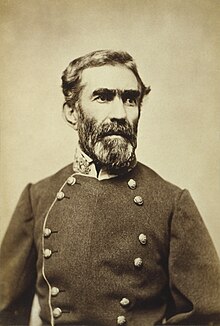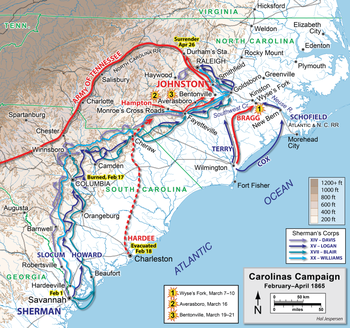After the fall of Fort Fisher in January and Wilmington, North Carolina a few weeks later, the Federal troops there under Maj. Gen. John Schofield, were ordered to move inland to meet up with William Sherman's army on it's march north. Also ordered to join with Sherman was Maj. Gen. Jacob Cox's army in New Berne, north of Wilmington. The Confederates under Braxton Bragg and D. H. Hill, both natives of North Carolina, blocked Cox's path at Kinston.
 |
| Bragg |
When the Federals approached on March 7, Bragg went on the offensive. One brigade under Robert Hoke hit the Union left flank. D. H. Hill tried to lead the North Carolina Junior Reserves into the fight, but they were too panicked to attack, so he advanced with other veteran units. As the Union troops were being pushed back, Bragg called off the attack to deal with false reports of a threat to his line. In the mean time, but Federals sealed the gap in their line. Skirmishing continued over the next few days, to little result. The Confederates tried another flank attack on the 10th, but the Federals had strongly reinforced the position and were able to drive off the rebels. With more Union divisions arriving, Bragg decided to fall back, clearing the way for Cox's advance. The Federals had lost about 1,100 men, the Confederate, 1,500.
 |
| Schofield |






1 comments:
Warfare is a fascinating subject. Despite the dubious morality of using violence to achieve personal or political aims. It remains that conflict has been used to do just that throughout recorded history.
Your article is very well done, a good read.
Post a Comment